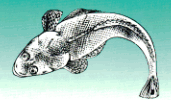
BEST BAIT: Live bait - small mullet, yabbies, prawns, white pilchards, also lures.
The flathead in our estuaries are essentially daytime feeding fish, which are more prevalent in summer months.
Many fishermen never make flathead fishing a specialty, preferring to fish a heavily weighted line with huge hook loaded with an unwieldy slab of fish flesh. This unit is put into the sea with the hope that a flathead will come along and catch himself.
On occasions they do oblige, so the "sleeper" line as it is known, has become popular with pastime anglers. They are not aware of the quantities and class of flathead that can be caught by the fisherman who goes out with the single purpose- to catch flathead.
The fish is lazy, preferring to lie partially buried in the sand, awaiting food to come to him. So the flathead must be searched out, and presented a moving bait, particularly if by weaving the rod tip the bait is made to swim in a jerky movement, giving the appearance of a small maimed fish.
Convince the flathead that the bait is alive, but unable to escape, and it will rush the bait and take it in one gulp. The subsequent struggles throw pieces of bait around and arouse other flathead in the vicinity, making it a good policy to cast back into the same area as quickly as possible.
The most encountered size of flathead is the "schoolie" of from 1/2 to 2 kilos, so the rig is designed to accommodate it, yet be successful if a bigger fish comes along.
The rig is a No. 2/0 fine pointed hook on a 30cm trace attached to the main line with a No 12 swivel. This small free running swivel used above the lead weight will keep the line free of twist from any cause whatsoever.
The main gear alteration is that a running sinker is not preferred as it slides along the line causing the bait to sink unnaturally. A split shot, clamping down to the trace about 16cm above the hook is all the weight necessary and being fixed allows the angler to swim the bait forward and down in a most realistic manner. Practice this bait movement by lifting and lowering the rod slowly, in shallow clear water until it is perfected, for this is the main part of the technique.
In any estuary fishing, do not resort to wire traces as they are stiff and take all the natural movement from the bait. Traces of lighter breaking strain than the line are also not favoured as this deludes the angler on the breaking strain of his gear. The same size nylon, perfectly clear, is preferred. Some anglers take the precaution of using a 30 cm trace of heavier nylon, but the sawing action by the head of the flathead mainly takes place on the surface, and if the fish is kept submerged as you are playing it, you will rarely have trouble.
The favoured baits would be white pilchards, yabbies and fresh prawns. Fish flesh can be a tempting bait if cut into small triangles and left free to move on the hook by inserting the point through once only at the broad end of the bait.
The bite from a flathead is entirely different from other fish. The first indication is similar to being snagged, so it pays to treat all obstructions as flathead, until proved differently. The flathead will turn its head and give the well known bump, and a pause must elapse before you wind the fish and lean. While not a strong fighter, he does save an extra burst for that period just before beaching or landing. If you don't rush him you can usually count the fish as yours.
To handle the fish, which has spikes on each side of its head, it is well to remember that a sharp blow 3 cm or so behind the eyes will stop its movement. In fact many big fish have been landed without net or gaff, by knocking them out with a rowlock, short piece of pipe, or wooden waddy, while it is still in the water beside the boat. In using a landing net, always place the hoop of the net around the head of the fish. It is obvious that any attempts to net from the tail will result in the fish continually swimming out of the net.
Flathead feed near fast running water, so look for any different features such as a change in formation, meeting of currents, or sand spit edge which will just keep them free of tide.
Remember you catch big flathead in very shallow water, close to the shoreline. Do not wade in until you have tried these places.
FLATHEAD SURF ANGLING
Small surf gutters and holes close to the shoreline very often have good size flathead pocketed in them. The use of an estuary rod and reel, loaded with 4 kg line, smaller hooks and a minimum of lead weight, is adequate here.
In this type of flathead fishing, the rigs, baits and methods used, are similar to those described in estuary flathead fishing. It is still a matter of searching the fish out by working the bait through the holes and right to the shoreline. A nylon trace with a size 2/0 hook is again the normal rig. Never wade into the water before it has been well tried, as the flathead could be in very shallow water.



 Navigation
Navigation